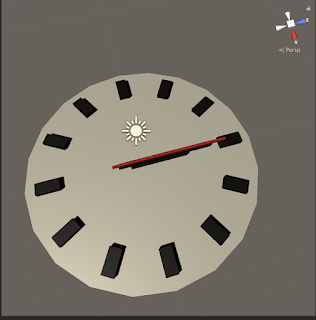Game Decisions
An article that I read this week is "Building a Princess Saving App", by Daniel Cook. It is a transcript of a talk aimed at Interaction Designers, but contains a lot of useful information and draws comparisons between game and app design.
 |
| Fun is one of the core concepts of Game Design Source: Article |
The author writes that game players learn new skills, and they have fun doing so. He uses the iconic video game staple of "Rescuing Princesses", to compare games and apps. While this theme is usually associated with video games, Cook attempts to make a princess rescuing application. He creates three different types of application:
- Basic Web App
- Simple Web 2.0 App
- Complex Web App
The learning curve on the basic and complex web apps are slow, but there is much more learning involved. The positive thing about this is that there are many more features than the other applications, but learning them all can be daunting, frustrating and time consuming. Users can become deterred, and cease using the application. The simple Web 2.0 app is simply a button that reads "Rescue Princess". When clicked, you rescue the princess and it's function is fulfilled. This is a much more straightforward app, but there is virtually no learning curve. The functionality reaches a peak instantly, and there is no other features to use. So which should be picked? Simple and easy to learn, or complex and painful?
Cook goes on to remind his audience of one of the original Princess Rescuing games: Super Mario Brothers. He lists several of the skills learned in the game such as jumping, wall jumping, defeating enemies, navigating while big or small etc. While there are a vast number of features included in the game, and the user must learn them all in order to progress, the learning curve is much steadier than in an application with a similar theme.
 |
| The bold red line is the video game. The others are the simple and complex apps. Source: Article |
Here, your skills increase at a faster pace, and there is no dip where users are struggling. And the key difference between the two experiences is: Fun. So fun that users will pay to learn how to use the application. Games use a technique called exploratory learning. Players are given a goal, but are not told how to reach that goal. They are encouraged to try, and they are allowed fail. When they are told they have failed, they try again and eventually succeed. The fun comes when they figure out how to succeed on their own. The main thing that must be assumed is that the user is smart.
Cook uses Super Metroid as an example. There is a section where the player gets dropped into a pit, and the only way out is a long shaft upwards. It seems impossible to ascend, but then three creatures are seen jumping from wall to wall to make their way up. This puts the player into a safe environment that gives them no option but to learn the new skill. It then gives a hint on what to do by showing the gremlins performing the skill the player must learn.
It's payoffs like this that make the player feel successful, and gives that satisfaction of completing a challenge. They weren't told exactly how to do something, and they managed to figure it out. Balancing challenge and knowledge is a good approach to designing a game.
- Ultan
Cook uses Super Metroid as an example. There is a section where the player gets dropped into a pit, and the only way out is a long shaft upwards. It seems impossible to ascend, but then three creatures are seen jumping from wall to wall to make their way up. This puts the player into a safe environment that gives them no option but to learn the new skill. It then gives a hint on what to do by showing the gremlins performing the skill the player must learn.
It's payoffs like this that make the player feel successful, and gives that satisfaction of completing a challenge. They weren't told exactly how to do something, and they managed to figure it out. Balancing challenge and knowledge is a good approach to designing a game.
- Ultan


Comments
Post a Comment